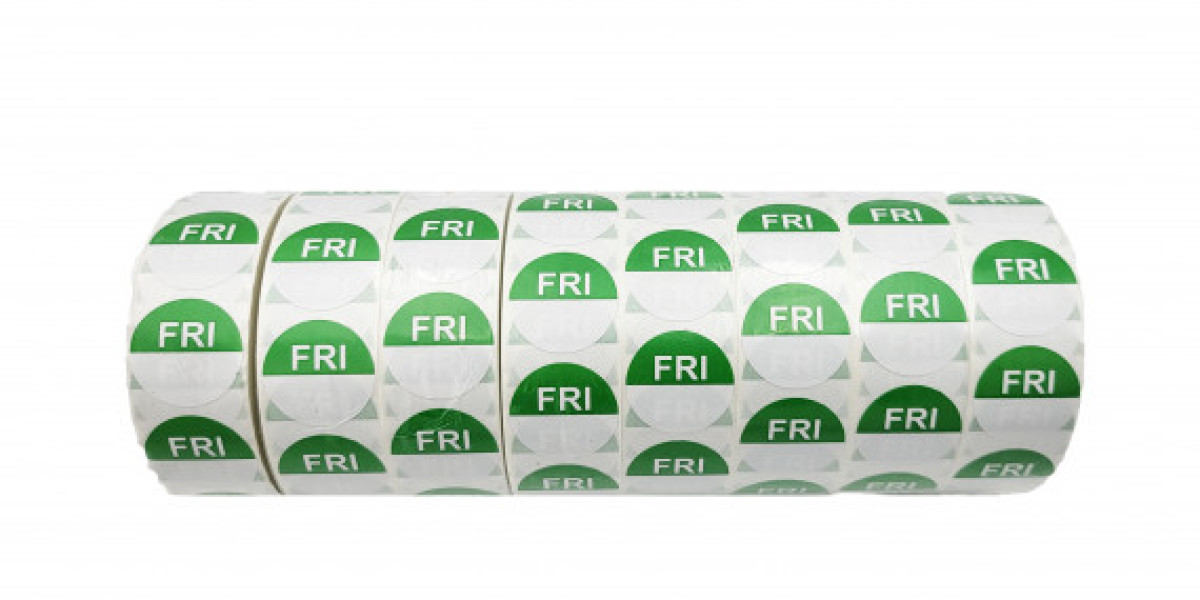In a world where we’re constantly juggling busy schedules, meal prepping has emerged as the ultimate time-saver. But let’s face it—what’s the point of preparing delicious meals if you can’t trust their freshness? Enter day labels, your new best friend in food storage! Imagine opening your fridge to an organized symphony of colors, with each container telling you exactly when that savory stew or zesty salad was made. Not only do these handy labels minimize food waste and keep your pantry in check, but they also elevate your culinary game by ensuring every bite is bursting with flavor.
The Vital Role Day-Labels and Their Purpose
Firstly, day-labels act as a reminder for when a particular food item was prepared or opened. This is especially important for perishable foods such as meat, dairy products, and leftovers. By having a visible date on the label, we can easily identify if the food is still safe to consume or if it has exceeded its recommended expiration date. This helps prevent food poisoning and other health hazards associated with consuming expired or spoiled foods.
Secondly, day-labels also serve as a communication tool between different individuals handling the same food item. For instance, in a restaurant kitchen where multiple chefs may be preparing different dishes using similar ingredients, day-labels ensure that everyone is aware of which food items are fresh and which ones need to be used up first. This promotes efficiency and prevents any confusion or mishaps during meal preparation.
Moreover, day-labels aid in maintaining proper inventory management. By labeling each container with its respective date of preparation or opening, it becomes easier to rotate stock and use up older items before newer ones. This ensures that no food goes to waste due to expiry dates being overlooked.
In addition to tracking freshness and ensuring efficient inventory management, day-labels also have an important safety purpose. In case of any reported cases of contamination or recalls on certain products, having accurate dates on labels allows for quick identification and disposal of affected items. This helps prevent potential illnesses caused by contaminated foods.
Types of Day-Labels and their Uses
Day-labels come in various forms, each designed for specific uses in your kitchen. The most common type is the adhesive label, which easily sticks to containers and can be removed without leaving residue. These are perfect for marking leftovers or meal-prepped items. Another option is the write-on wipe-off labels. They allow you to jot down dates and contents with a dry-erase marker, making it easy to reuse them. This versatility comes in handy when dealing with seasonal ingredients.
Magnetic labels are ideal for metallic containers or refrigerators. They stay put but can be repositioned as needed, offering flexibility in labeling items such as homemade sauces. For those who want something more durable, laminated day-labels provide resistance against moisture and wear. Great for long-term storage solutions like bulk grains or frozen meals, they ensure your food stays fresh longer while providing clear information at a glance.
Benefits of Using Day-Labels for Food Preparation
Using day-labels in food preparation offers clarity. They help track when ingredients or meals were made. This ensures you’re always using the freshest items first. Day-labels simplify meal prep by reducing guesswork. You can quickly identify which components are ready to use, saving time during busy cooking sessions. Knowing exactly when something was prepared allows for better planning and reduces waste.
These labels also promote safety in the kitchen. By marking your foods with their preparation dates, you’re less likely to overlook perishables that could spoil. It fosters a more organized environment where every ingredient has its purpose and timeframe. Moreover, day-labels enhance accountability among family members involved in meal prep. Everyone knows what’s available and how long it lasts, leading to more efficient collaboration in the kitchen without any confusion or mishaps along the way.
Lastly, using day-labels in food preparation can help save money. By properly labeling and tracking your ingredients, you can avoid throwing out perfectly good food that may have gone bad due to not being used in time. This can also help with meal planning and grocery shopping, as you will know exactly what ingredients you have on hand and how long they will last before needing to be replaced.
How Day Labels Can Help with Food Storage
Firstly, day labels provide important information about the date when the food was prepared or stored. This is crucial for keeping track of when certain items need to be consumed or thrown out. It's easy to forget when you bought something or opened a package, but with day-labels, you have a clear reminder of how long that item has been in your fridge or pantry.
Day-labels are especially helpful for foods that have shorter shelf lives, such as dairy products and meats. By properly labeling these items with their preparation or expiration dates, you can avoid consuming spoiled food which could lead to food poisoning. This not only ensures your safety but also prevents unnecessary waste and saves money in the long run.
Moreover, utilizing day-labels can also aid in meal planning and organization. When all your ingredients are properly labeled with their corresponding use-by dates, it becomes easier to plan meals around those dates instead of guessing which ones should be used first. This can save time and effort when preparing meals as well as reduce the chances of wasting unused ingredients.
Another benefit of using day-labels is that they help maintain an efficient rotation system for your food storage. By placing newer items at the back of your pantry or fridge and older ones at the front, you ensure that items are used before they expire. This practice is known as "first in first out" (FIFO) and it helps prevent any forgotten or expired items from being pushed to the back and going bad.
Tips for Properly Labeling Foods with Day-Labels
Properly labeling foods with day-labels is essential for maintaining food safety, freshness, and efficient inventory management in both commercial and home kitchens. Day-labels help track when food was prepared, opened, or stored, reducing the risk of serving expired or spoiled items. Clear and consistent labeling practices ensure compliance with food safety regulations and promote a hygienic working environment, especially in restaurants, catering services, and food manufacturing facilities.
When labeling food, always include key information such as the preparation date, expiration date, and item description. This makes it easy for staff to identify products quickly and rotate stock according to the “first in, first out” (FIFO) method. Using colour-coded day-labels — for example, blue for Monday or red for Friday — can further simplify the process and help staff immediately recognise which foods need to be used or discarded.
It’s equally important to choose durable and easy-to-read labels. High-quality day-labels that resist moisture, grease, and temperature changes are ideal for kitchen environments. Removable labels are especially useful for reusable containers, as they prevent sticky residue and save time during cleaning.
Lastly, establish a consistent labeling routine and train all staff members on its importance. Everyone involved in food preparation or storage should understand how to label items correctly and why it matters. Regularly reviewing labeling practices can prevent errors and ensure your food handling meets health and safety standards. By adopting a clear, well-organised day-labeling system, you’ll improve kitchen efficiency, reduce waste, and maintain the highest level of food safety.
Cost-effective Options for Purchasing
When it comes to purchasing food, cost is always a consideration. However, it's important to balance affordability with freshness and safety. Thankfully, there are cost-effective options for purchasing food that can help you maximize freshness and minimize waste. One option is buying in bulk. Purchasing larger quantities of non-perishable items such as grains, beans, and pasta can save you money in the long run. These items have longer shelf lives and can be stored in airtight containers for extended periods of time without losing their freshness. This also allows you to buy these items on sale or in bulk at discounted prices.
Another way to save money while maximizing freshness is by buying produce that is in season. Fruits and vegetables that are in season are usually cheaper due to their abundance and do not have to travel far distances before reaching your local grocery store. This means they're likely fresher than out-of-season produce which has been transported from other regions or countries.
Shopping at farmer's markets or joining a community-supported agriculture (CSA) program are also great ways to get fresh produce at a lower cost. Not only do these options support local farmers, but they often offer deals on bulk purchases of fruits and vegetables that may not look perfect but still taste just as good.
Additionally, consider purchasing frozen fruits and vegetables instead of fresh ones when they are not in season. Frozen produce is often picked at its peak ripeness then flash-frozen, retaining most of its nutrients and flavor. It's also typically more affordable than fresh produce that has been imported from other regions or countries.
Conclusion
In today's fast-paced world, it is easy to overlook the simple things that can have a big impact on our daily lives. As we have discussed, day labels play a crucial role in ensuring food safety and preventing waste. By following these labels and incorporating them into our food preparation and storage habits, we can protect ourselves from potential health hazards and also contribute towards reducing food waste. So let us all make an effort to pay attention to day-labels on our foods and do our part in promoting safe and sustainable practices for a healthier tomorrow.
FAQs
Why Is It Important to Use Day Labels for Food Preparation and Storage?
Day-labels are crucial for food preparation and storage as they help in maintaining the quality, safety, and freshness of food products. By clearly labeling when a particular item was prepared or stored, it becomes easier to keep track of its shelf life and ensure that it is consumed within a safe time frame.
How Do I Know Which Label to Use for Different Types of Foods?
It is recommended to use specific labels designed for food items based on their storage requirements. For example, there are different labels available for refrigerated items, frozen items, dry goods, etc. These labels often have spaces to fill in the date of preparation or expiration, making it easier to differentiate between various food items.
Can I Reuse Labels On Containers after Cleaning Them?
No, reusing labels can lead to cross-contamination and compromise the safety of your food. It is essential always to use a fresh label when storing or preparing new batches of food.
How Long Can I Store Labeled Refrigerated Foods before they Go Bad?
The length of time that labeled refrigerated foods can be safely stored varies depending on the type of food item and how it has been prepared or processed. Generally, cooked meats should be consumed within 3-4 days, while raw meat should be consumed within 1-2 days. Dairy products typically last 5-7 days if properly labeled.
Related Business Listings |










